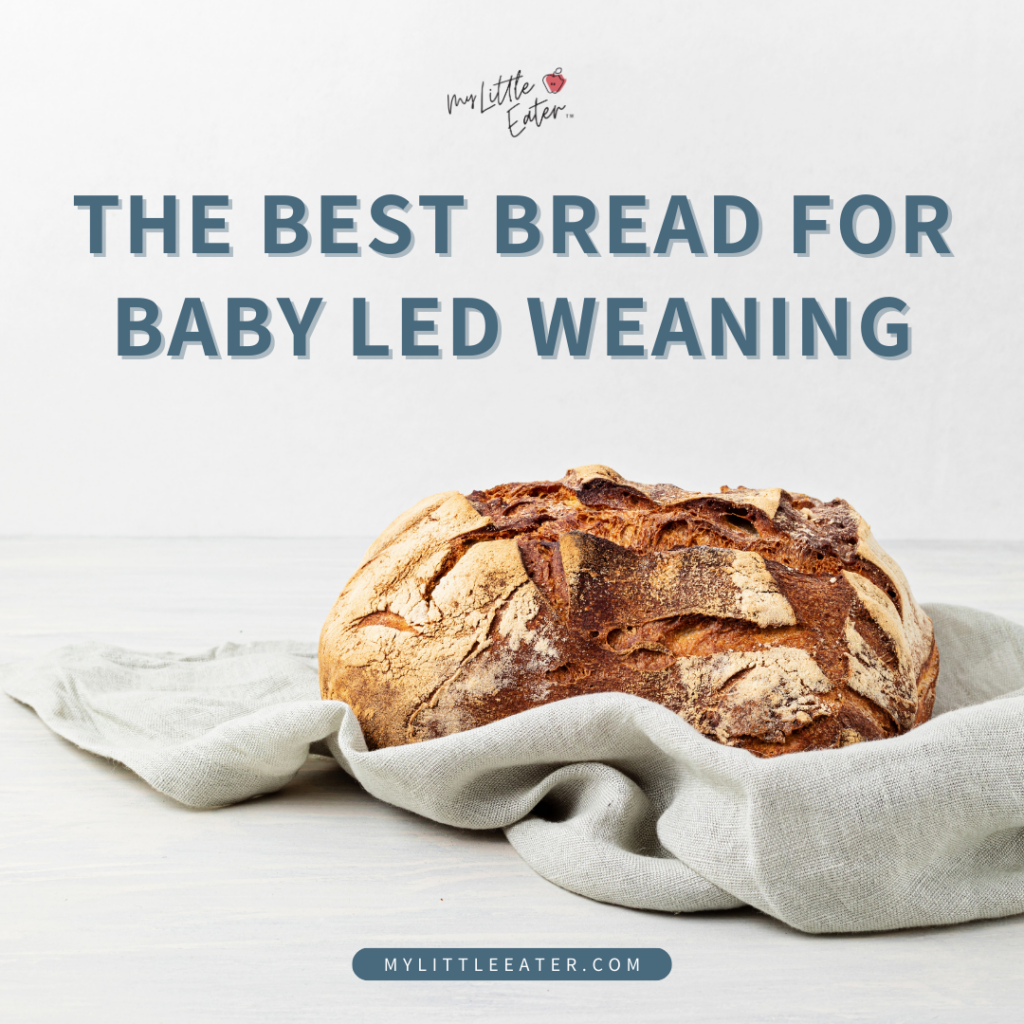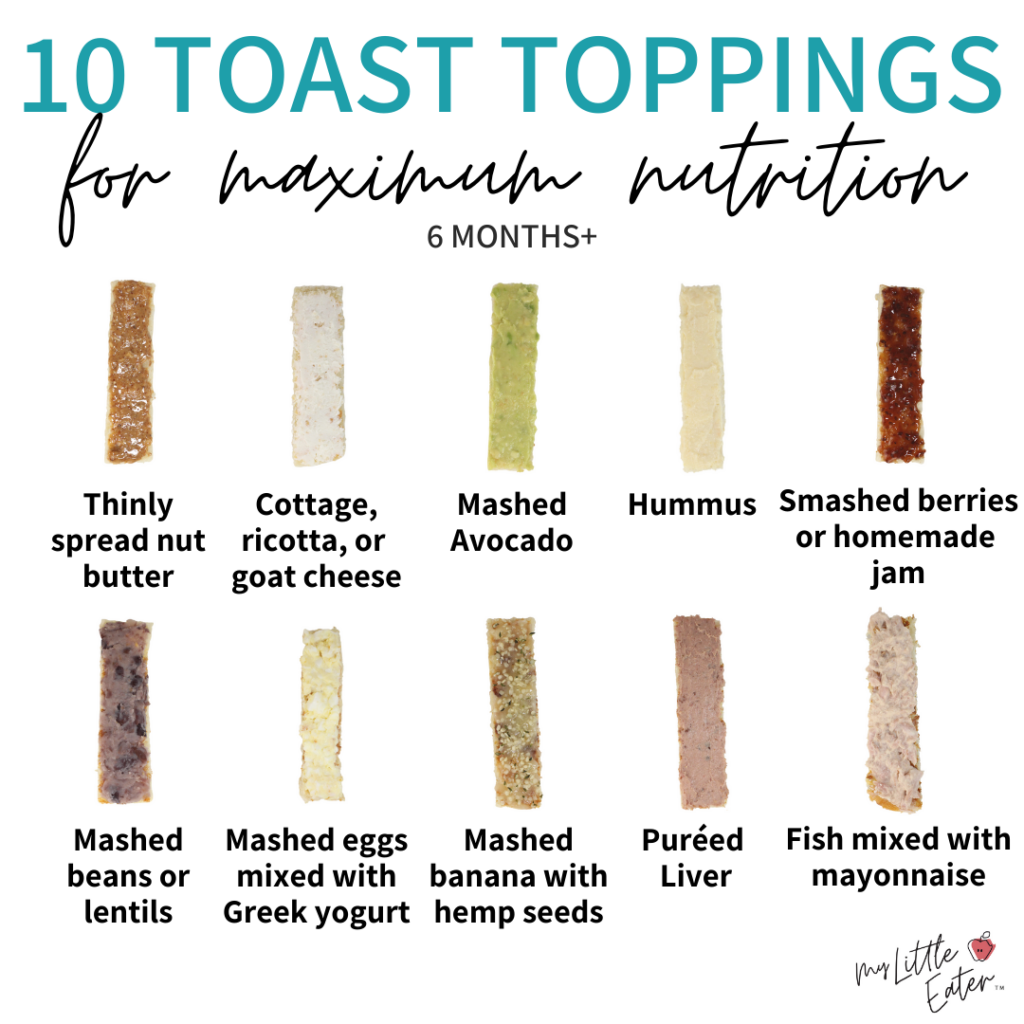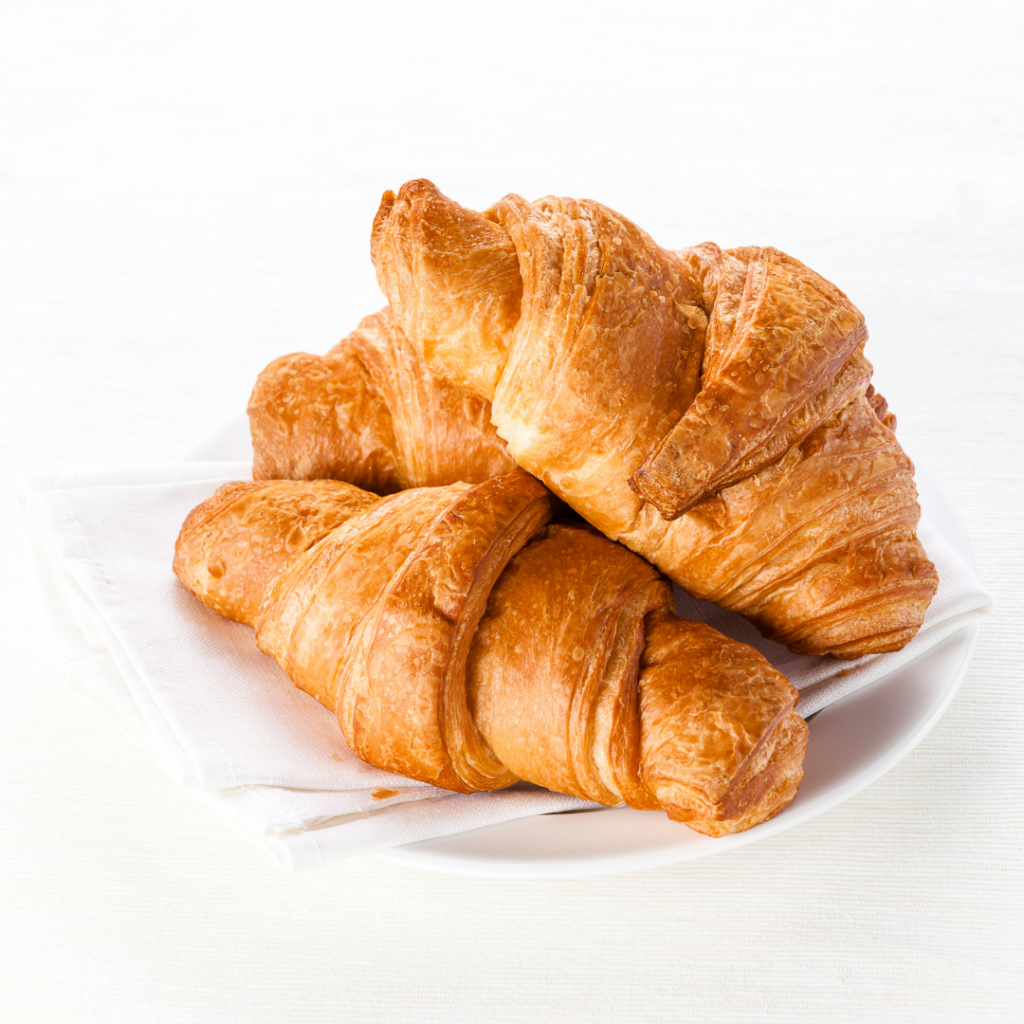Bread is eaten in many different varieties all around the world – it’s just one of those foods that pairs well with almost anything!
And for babies, we love that bread can be an easy vehicle for introducing harder-to-eat foods like nut butters, hummus, mashed berries, cooked beans, and more! This also makes it an easy way to get important nutrients into your baby’s diet.
That said, untoasted, fresh bread is a choking hazard for infants which is why we want to make sure you know how to serve it correctly so that it’s safe for your baby. Let’s get into the details!

If you’re just getting started with solids, or maybe you’ve started but aren’t sure where to go next, check out our Baby Led Feeding online course!
With videos, resources, slides, and our searchable Texture Timeline™ Food Library – you’ll have everything you need to learn how to serve all foods safely, build a healthy relationship with food from the start, introduce top allergens, prevent picky eating, and so much more – right at your fingertips.
Table of Contents
When can babies eat bread?
Bread is safe for your baby to eat – if prepared properly – starting at around 6 months or when they’re showing all of the developmental signs of readiness (which is what we recommend!).
We’ll discuss in more detail what we mean by “prepared properly” below, but to sum it up quickly…untoasted bread is not safe for babies and cannot be served between 6-18months+.
Bread is only considered safe to serve to an infant if it has been lightly toasted, and even then there are some other things to think about and look out for.
But before we get into them, take a look at this 9 month old eating toast sticks like a pro!
Watch baby Reeya go!
Watch baby Reeya go!
Baby Reeya is just about 9 months old in this video and is loving toast fingers!
Is bread a choking hazard?
Fresh bread is a choking hazard for babies due to its soft and sticky texture, which can gum up in a baby’s mouth, forming a large ball. To reduce the risk of choking, you can offer your baby lightly toasted bread with a thin spread of your choice to add moisture to make it easier for your baby to swallow.
Continue to offer lightly toasted bread until your baby is at least 18 months of age, and only if they’ve developed the oral motor skills to safely chew and swallow un-toasted bread. For some babies, this will happen right around 18 months old, and some may need more time – that’s ok!
Always make sure you’re offering your baby appropriate foods based on their skill level and ability to chew their food thoroughly.
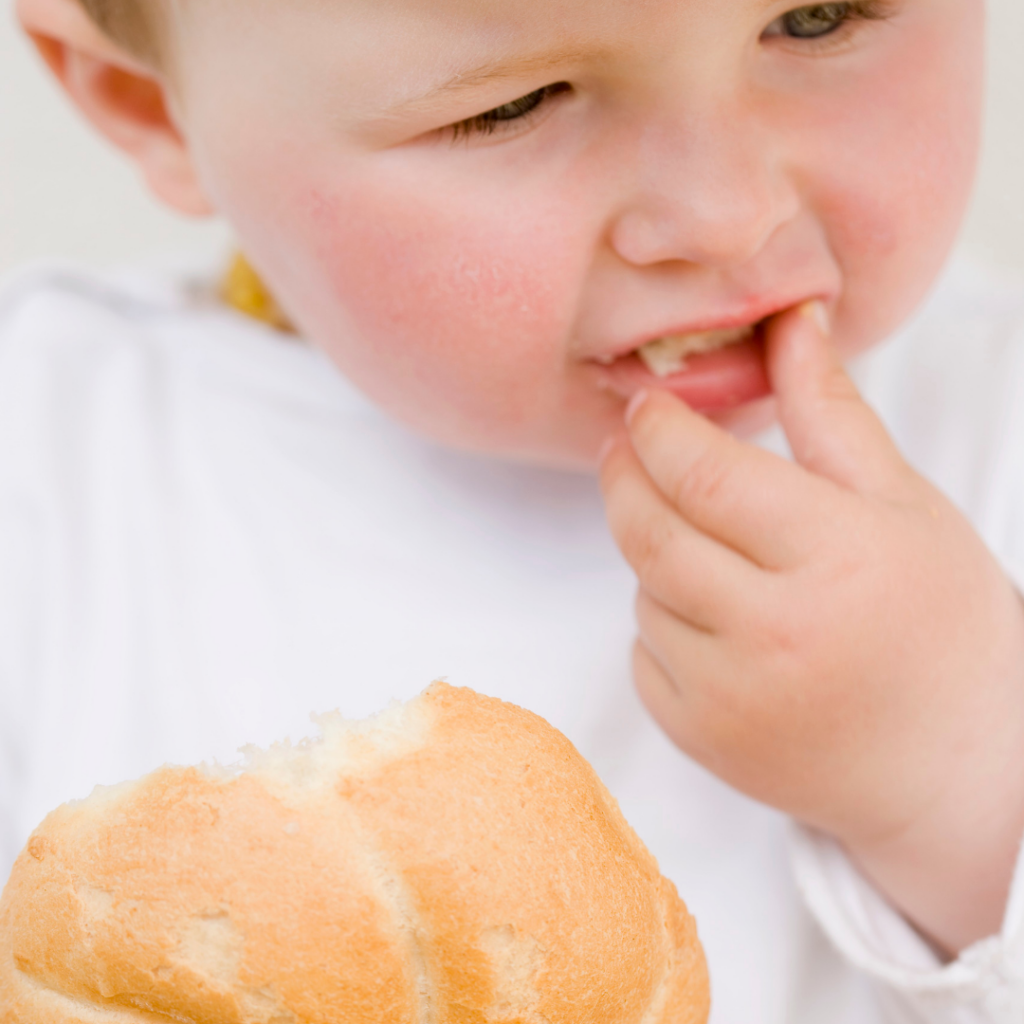
The best type of bread for babies
Some of our favorites are sourdough, whole wheat, and sprouted grain bread (in no particular order). This really comes down to the nutrition that these options offer over others at the grocery store. Particularly keeping in mind added sugar, high sodium, and other preservatives that we want to avoid for babies.
Recommended next...
To get all the details on these types of bread, plus our favorite brands to buy for your baby with nutritional breakdowns, read our blog on the best bread for baby led weaning.
How to toast bread for babies
As mentioned earlier, lightly toasting bread is key to keeping it safe for your baby to eat. This helps to get rid of some of that sticky, gummy texture making it less likely to ball up in your baby’s mouth and become lodged in their throat.
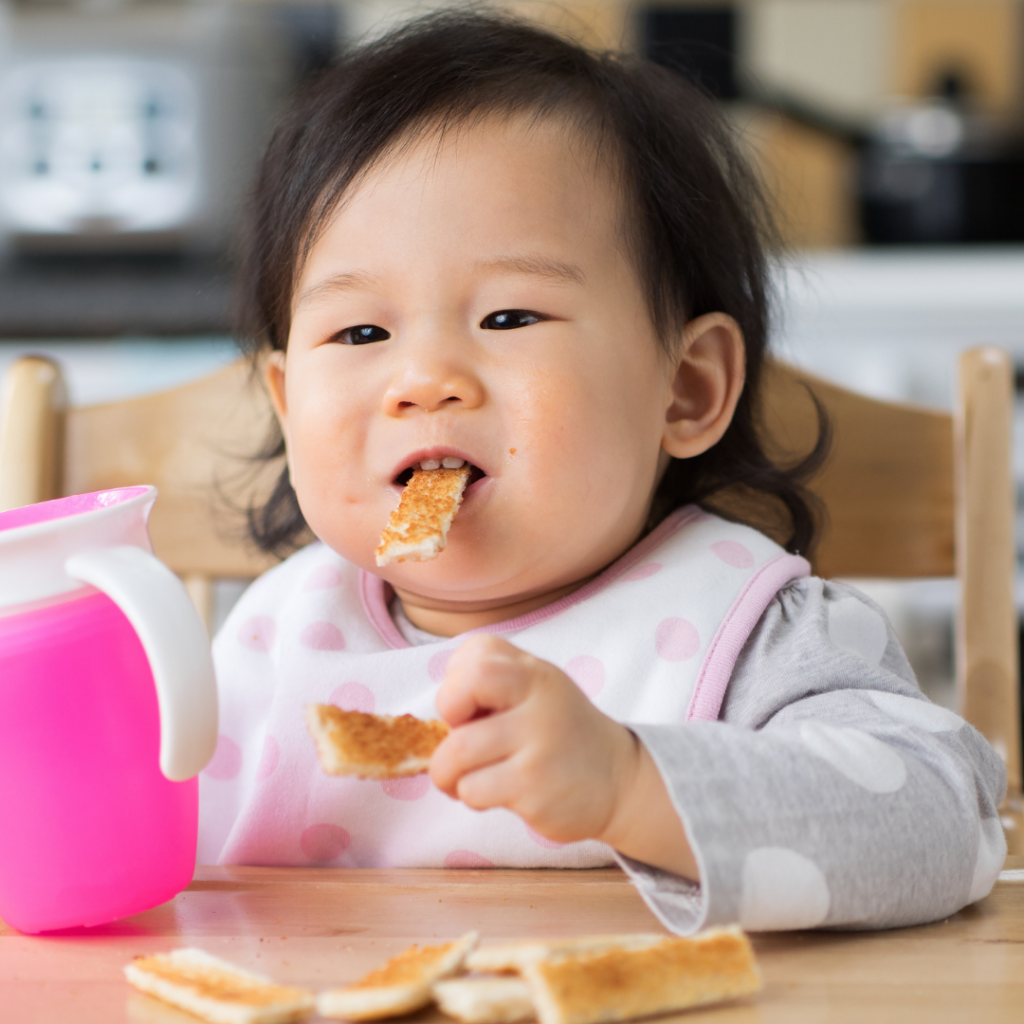
We know the next question on your mind is “how much is lightly toasted?”. It’s hard to give a definitive “toast time” given that each type of bread will toast differently, but we’ve included a demo below – in the how to serve section – of what texture you should look for to help ease any worries!
As another bonus, having the bread toasted makes it easier for your baby to self-feed because the toast fingers don’t fall apart as easily as soft, fresh bread would. You’ll want to cut the toast into long finger shapes, or if your baby has pincer grasp, you can cut it into 1” pieces that your baby can pick up with their thumb and forefinger. Find the specifics below in the how to serve section.
As your baby gets a bit older (around 18 months+) and develops better oral motor skills, you can consider offering un-toasted bread to them (in a sandwich for example!).
How to serve bread according to the Texture Timeline™
These are the safest, suggested ways to serve food to your baby based on the scientific, developmental, and clinical research and expertise available to date and are vetted by leading pediatric doctors, speech-language pathologists, and dietitians. However, please note that babies can technically choke on anything, including purees. Always take into account your child’s individual abilities and needs and check with your doctor or feeding therapist on the safety of offering these foods to your baby. Be mindful of how to set up a safe eating environment and please know that all material, opinions, advice, and information found on mylittleeater.com is for informational and educational purposes only. See our disclaimer for more information.
Texture Timeline Phase 3
Finger-shaped toast (Palmar Grasp)
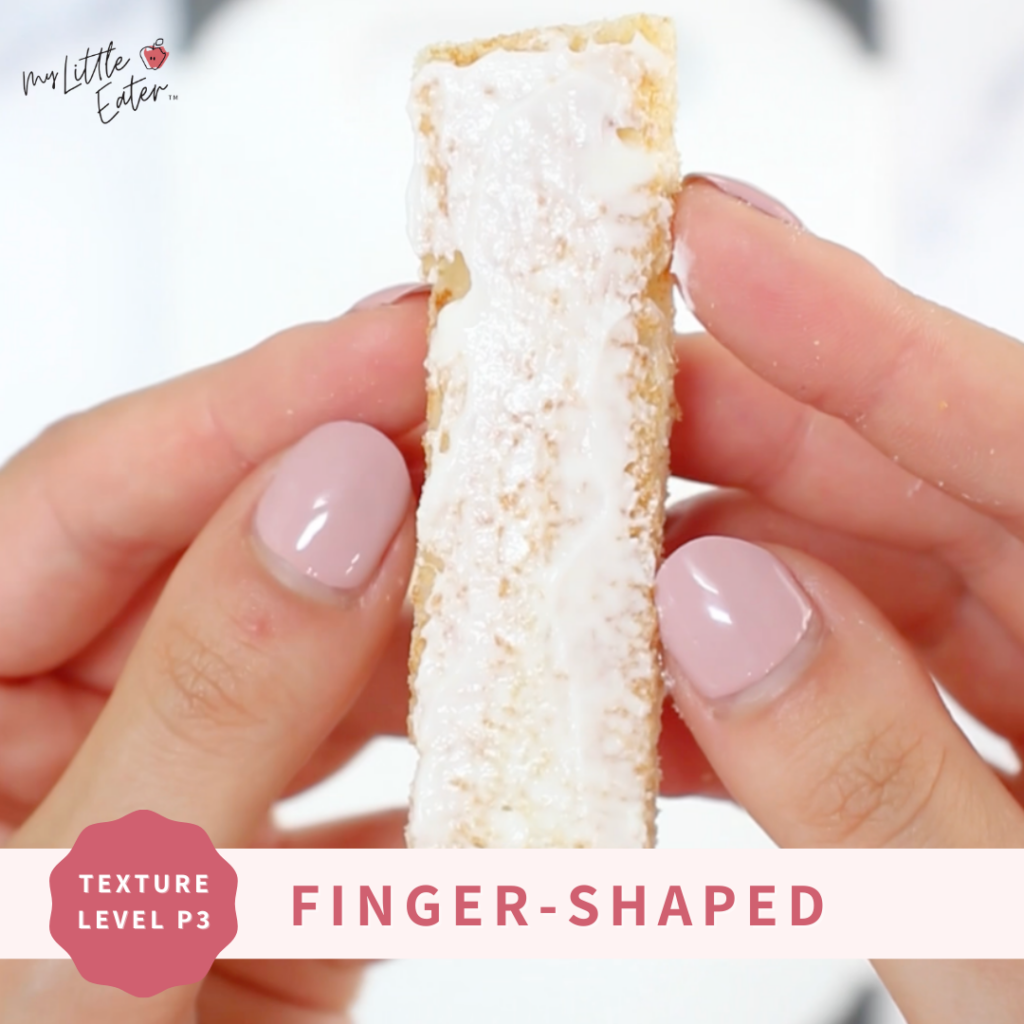
Remove the crust and cut the lightly toasted bread into wide finger shapes for your baby to eat using their palmar grasp.
Top these with a nutritious spread to keep it moist and easier for your baby to chew. We’ve included some of our favorite options below!
One thing to note is that you want to spread these thinly on the toast so it isn’t too much for your baby – specifically with things like nut or seed butter that are sticky and a choking hazard in large globs.
Texture Timeline Phase 3
Bite-sized toast (Pincer Grasp)
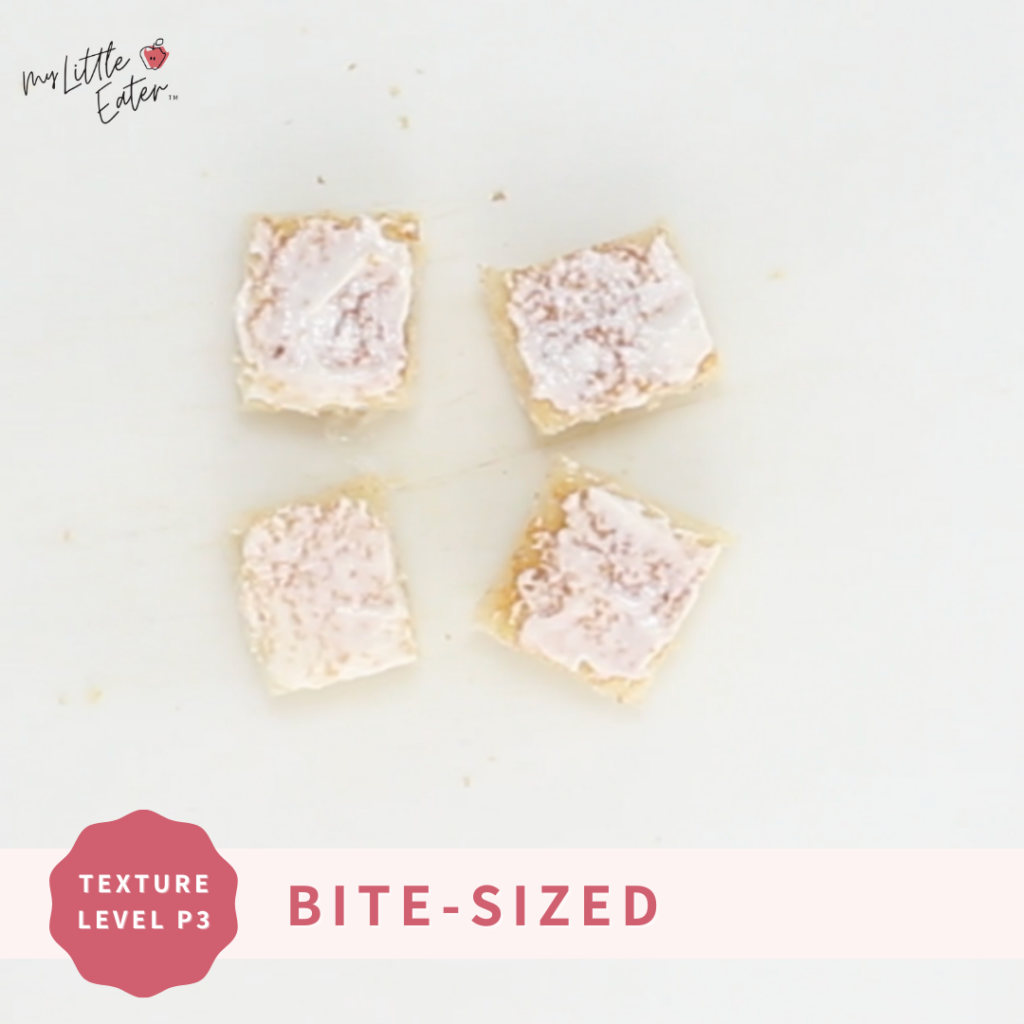
You can dice lightly toasted bread into bite-sized pieces for your baby to eat using their pincer grasp. Again, add spreads before dicing the toast to increase nutrition and moisture!
Fun Fact!
Fun Fact!
Bread is the most widely consumed food in the world (4)! It has numerous types that vary by mode of preparation, types of flour and other ingredients used, as well as the proportions of each ingredient present. These differences allow bread to take many shapes, sizes, and textures around the world (4).
Nutritional benefits of bread
Bread can provide your baby with an abundance of carbohydrates, fiber, and even a bit of protein, making it a healthy addition to a balanced diet! It’s important to keep in mind that not all bread is created equally, and the amount of nutrients varies depending on the type of bread.
Sprouted whole grain breads are the best choice nutritionally, as they’re a better source of many important nutrients for baby, including (3):
- B vitamins (thiamine, riboflavin, niacin, folate) which help to convert carbohydrates to energy and play a role in transporting oxygen and energy throughout the body.
- Magnesium which is beneficial for muscle and nerve function.
- Fiber for gut health and digestion.
- Protein which is required for your baby’s growth and for repairing and making new cells in the body.
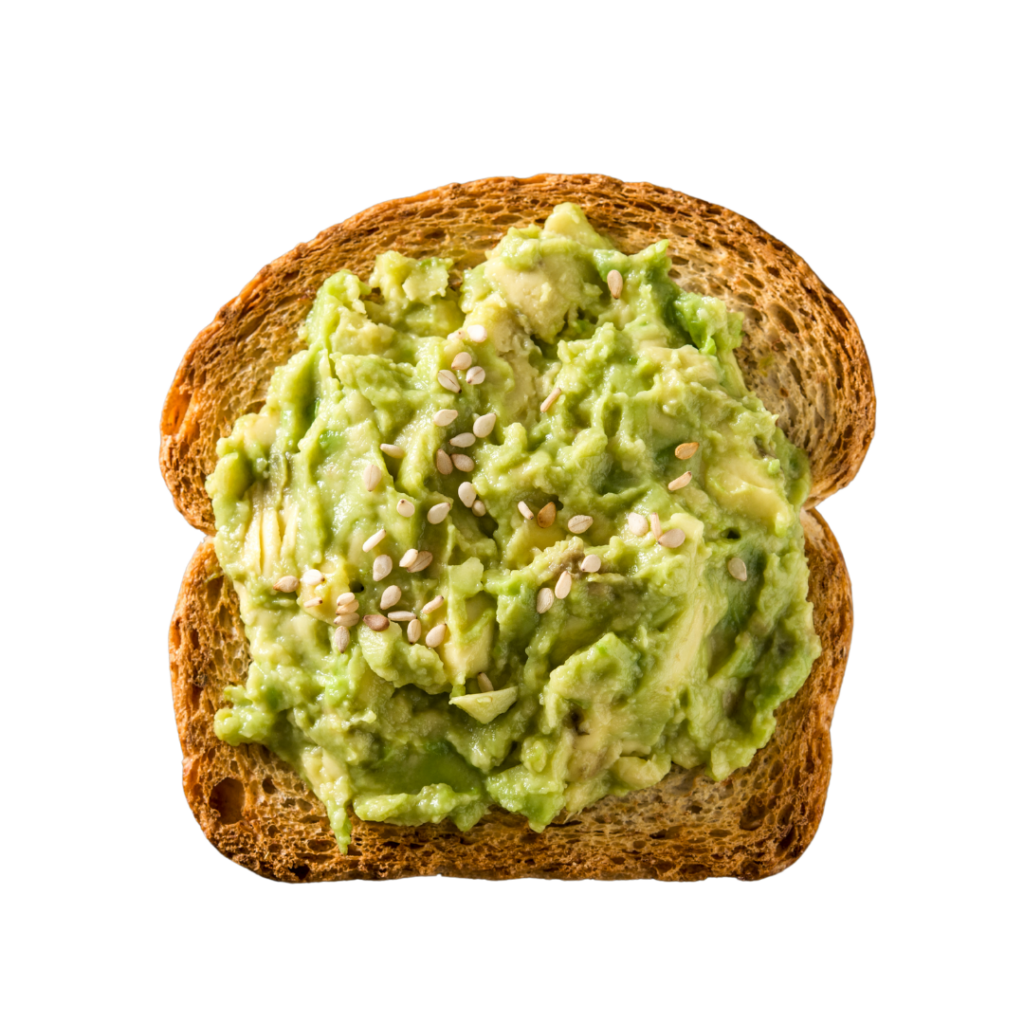
Check the ingredients
When buying bread for your baby, look for brands that meet the following…
- Low to no sodium (aim for <100 mg of sodium/slice)
- No added sugars or sweeteners
- No large seeds or nuts (these are choking hazards)
- No honey
We want to avoid honey because of the risk of infant botulism. Although the bread is cooked and then toasted, this is not enough to destroy the spores and there is still risk for a baby under 12 months.
Toast topping options for babies
To keep the toast from being too dry for your baby to eat, we always recommend spreading something nutritious on top. This can also benefit your baby by adding extra nutrition, iron, fat, and calories.
Spreads you can try with your baby include hummus, labneh, baba ghanoush, mashed avocado, thinly spread nut or seed butter, Greek yogurt, ghee or butter, mashed fruit, and more!
Recommended next...
Check out our full list of ideas in our toast topping blog, and get started with some of our favorites below!
Click the image below to download it or pin it to save for later.
Can babies be allergic to bread?
Yes, bread contains wheat which is considered one of the top 10 allergens recognized in Canada and the United States. Therefore, it’s recommended you introduce it to your baby as early as possible after starting solids (1, 2).
Some types of bread also contain other top allergens like soy or sesame, for example. It’s very important that you read ingredient lists before offering any bread to your baby to be sure which allergens may be present.
If more than one allergen is found in the bread, you’ll need to rule out some of the allergens using other foods before offering the type of bread that contains various allergens mixed together.
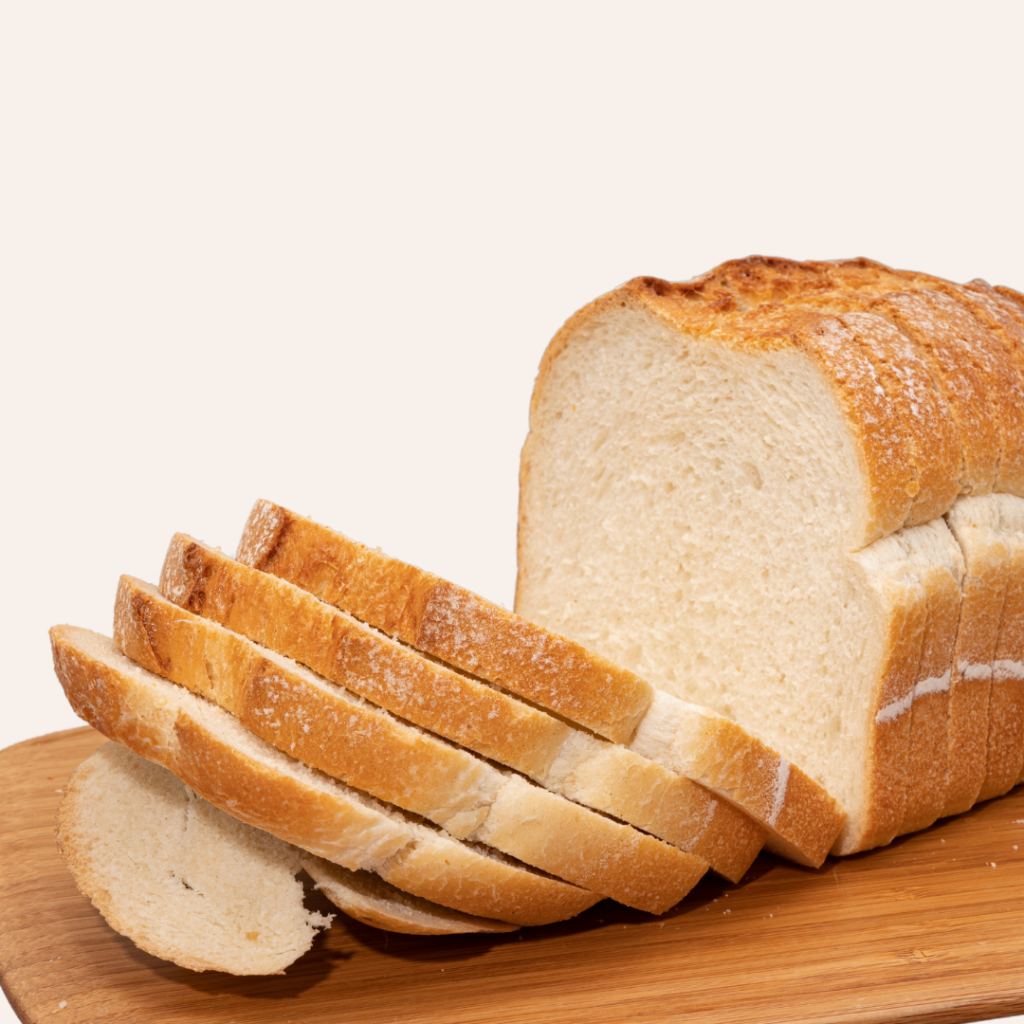
Learn all of the details on serving top allergens to babies, and review the following general protocol for introducing allergenic foods before offering any:
- Stay home and offer the food in the first half of the day when your baby is healthy.
- Offer the allergenic food in tiny amounts initially, and increase the quantity over a few days. We recommend starting with a very tiny amount, waiting 10 minutes to observe for a reaction, and if no symptoms are present allowing your baby to finish their meal. This is only necessary for the first introduction of the allergen. Since reactions can be dose-dependent, reintroduce in larger quantities the following day and monitor for symptoms.
- Space out the introduction of foods – introduce only one allergenic food per day and wait 2 days before introducing a new highly allergenic food.
- Record symptoms – if your baby is allergic to a food, you’ll typically see a reaction within 10-15 minutes after eating the food. There could also be a delayed reaction, so monitor your baby for up to 6 hours after introducing the allergenic food. If your baby has a reaction, stop serving the food and contact their doctor for further recommendations.
- If no reaction occurred the first time, introduce the same allergen for a second time.
- Offer the allergen regularly as long as your baby did not react during the first two times to help prevent an allergy from developing later on.
Can babies have other types of pastry?
Bagels, English muffins, tortillas, naan, etc. are all safe for babies – when served correctly!
They each have their own specific preparation requirements for safety. Please review our tips in the FAQ section of the blog on the best bread for babies for all the info you need.
Pin it to save for later!
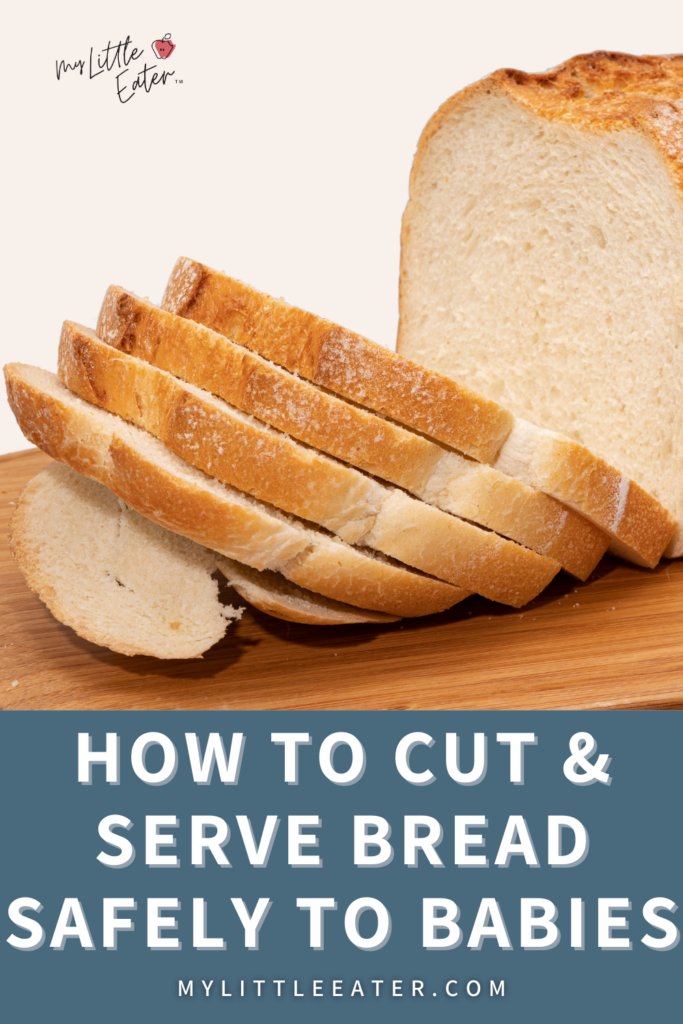
References
- Food Allergy Canada. Early Introduction. 2019. Retrieved from https://foodallergycanada.ca/living-with-allergies/ongoing-allergy-management/parents-and-caregivers/early-introduction/
- Canadian Paediatric Society. Introduce complementary foods earlier to prevent allergy: pediatricians. Jan 24, 2019. Retrieved from: https://cps.ca/en/media/introduce-complementary-foods-earlier-to-prevent-allergy-paediatricians
- Benincasa, P., Falcinelli, B., Lutts, S., Stagnari, F., & Galieni, A. Sprouted grains: A comprehensive review. Nutrients, 11(2), 421, 2019.
- https://justfunfacts.com/interesting-facts-about-bread/

Chelsey Landry, RD
Community Dietitian at My Little Eater Inc., and bunny-mom to Hickory. Chelsey offers one-on-one counselling to parents of babies and toddlers that need more customized support. Learn more by booking a free discovery call with her today!

Chelsey Landry, RD
Community Dietitian at My Little Eater Inc., and bunny-mom to Hickory. Chelsey offers one-on-one counselling to parents of babies and toddlers that need more customized support. Learn more by booking a free discovery call with her today!
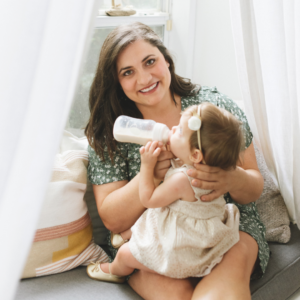
Mallory Roberts, SLP
Mallory is a Speech-Language Pathologist, Infant Feeding Specialist, and Craniosacral Therapist. She's also a busy mom of four little ones!

Mallory Roberts, SLP
Mallory is a Speech-Language Pathologist, Infant Feeding Specialist, and Craniosacral Therapist. She's also a busy mom of four little ones!
